Brief biography of Vincent van Gogh
Vincent van Gogh was born in 1853 in the Netherlands. Early on in search of meaning, he explored different paths — pastor, art dealer, teacher — before dedicating himself to painting at the age of 27. In just ten years, he created over 2,000 works, including nearly 900 paintings, often made in poignant solitude and a consuming creative urgency. Plagued by mental troubles and an exacerbated sensitivity, Van Gogh sold only one painting during his lifetime. He died in 1890 in Auvers-sur-Oise, at the age of 37, in relative obscurity… far from the legend he was to become.

Why do his paintings still fascinate today?
Van Gogh is painting at its most visceral. His swirling brushstrokes, vibrant colors, and unique way of representing light and human emotion still deeply touch the viewer. Each work seems to speak from soul to soul: the infinite blue of The Starry Night, the solar warmth of Sunflowers, the melancholy of a Field of Wheat with Crows...
His art does not cheat: it screams, it cries, it loves. And it is this raw sincerity, this emotional intensity, that makes his paintings eternal.

His impact on the history of art
Long ignored, Van Gogh is now considered one of the greatest painters of all time. A precursor of Fauvism and Expressionism, he influenced entire generations of artists, from Munch to Bacon, including the German Expressionists. His unique style — between raw realism and pictorial lyricism — opened a new path for modern art.
Beyond his artistic genius, it is also the man who inspires: the one who, despite rejection, suffering, and isolation, continued to create with passion and determination. Van Gogh is not just a painter. He has become a universal symbol of beauty born from chaos.
🎨 1. The Most Famous Paintings of Van Gogh
Vincent van Gogh painted hundreds of canvases, but some have become true icons of art history. Here are the essential works that forged his legend.
🌌 The Starry Night (1889)
Probablement le tableau le plus célèbre de Van Gogh, La Nuit étoilée est une œuvre peinte depuis la fenêtre de sa chambre à l’asile de Saint-Rémy-de-Provence. Ce ciel vibrant, ces étoiles tourbillonnantes, ce village apaisé... tout semble vivre sous l’impulsion d’un souffle cosmique. À la fois tourmentée et apaisante, cette peinture incarne la puissance émotionnelle de son style.
📍Where to see it? Museum of Modern Art (MoMA) – New York
🌻 The Sunflowers (1888-89)
Van Gogh painted several versions of his Sunflowers, notably in Arles, to decorate the room of his friend Gauguin. These bright flowers, turned towards the sun, have become his ultimate symbol. They represent both the energy of life and the fragility of the moment.
📍Where to see them? National Gallery – London, Neue Pinakothek – Munich, Van Gogh Museum – Amsterdam
🛏️ The Bedroom in Arles (1888)
This canvas evokes the simple serenity of everyday life. Van Gogh wanted to convey a feeling of rest and intimacy. With its bold colors and deliberately distorted lines, the room becomes almost an extension of his mind.
📍Where to see it? Van Gogh Museum – Amsterdam
🧑🎨 Self-Portraits (1886–1889)
Van Gogh a réalisé plus de 30 autoportraits en quelques années. Il les utilisait à la fois comme exercice technique et comme moyen d’introspection. Chaque regard capturé sur la toile nous livre une facette de son âme : tantôt fragile, tantôt intense, toujours profond.
📍Some museums: Musée d’Orsay, Art Institute of Chicago, Van Gogh Museum
🌾 Wheat Field with Crows (1890)
One of his very last works, painted in Auvers-sur-Oise shortly before his death. This painting, crossed by a stormy sky, dead-end paths, and menacing crows, is often seen as a prophetic vision. It testifies to the tragic grandeur of his art.
📍Where to see it? Van Gogh Museum – Amsterdam
☕ The Café Terrace at Night (1888)
Painted in Arles, this painting is one of the first to incorporate a starry sky, a theme he would later develop. With its warm colors, yellow and blue lights, it creates a magical atmosphere of a summer night. He does not need black to paint the night.
📍Where to see it? Kröller-Müller Museum – Otterlo (Netherlands)
👨⚕️ Portrait of Dr. Gachet (1890)
This portrait of the doctor who cared for Van Gogh at the end of his life is filled with emotion. Sold in 1990 for 82.5 million dollars, it is one of the most expensive paintings ever sold.
📍Today in a private collection in Japan
🗺️ 2. Where to See Van Gogh's Paintings Today?
Despite a life marked by solitude, Van Gogh is now celebrated in the greatest museums in the world. His works are scattered between public and private collections, and some cities like Amsterdam or Paris allow you to discover several in the same place.
🇳🇱 Van Gogh Museum – Amsterdam
It is THE reference museum for all Van Gogh enthusiasts. It houses the largest collection of his works in the world, with over 200 paintings, 500 drawings, and hundreds of letters.
Among the essentials:
🥔 The Potato Eaters (1885)
Painted in the Netherlands, this dark painting depicts a peasant family gathered around a meager meal. Van Gogh pays tribute to the hard life of agricultural workers, using earthy tones and low light. He considered this work a manifesto of social and human truth.
🛏️ The Bedroom in Arles (1888)
This intimate scene shows Van Gogh's bedroom in Arles. The deliberately simplified composition and bright colors express the calm and stability he sought to achieve. Each element – bed, chair, window – reflects a need for inner peace.
🌾 Wheat Field with Crows (1890)
Often interpreted as one of his last works, this dramatic painting shows a golden field under a stormy sky, crossed by crows. The dead-end paths and threatening sky symbolize despair, solitude, and perhaps a farewell to life.
🌸 Almond Blossom (1890)
This luminous painting celebrates the birth of his nephew. The flowering tree, a symbol of renewal and purity, is painted in a style heavily influenced by Japanese prints. One of Van Gogh's most soothing paintings.
📍Not to be missed: the evolution of his style through the rooms, from his dark beginnings to the vibrant colors of his Provençal period.
🇫🇷 Orsay Museum – Paris
The Musée d'Orsay exhibits several masterpieces by Van Gogh, in a majestic setting. One can admire:
🧑🎨 Self-Portrait (1889)
Created at the asylum of Saint-Rémy, this intense self-portrait shows a piercing-eyed Van Gogh, surrounded by swirling colors. The quick brushwork and vibrant background convey the instability of his mental state, while affirming a will to resilience.
⛪ The Church of Auvers-sur-Oise (1890)
Painted shortly before his death, this work shows a church with wavy, almost unreal contours. The strange perspective and dramatic light convey the artist's inner turmoil. The path that winds around the church seems to symbolize wandering.
🌌 The Starry Night on the Rhône (1888)
Différente de la Nuit étoilée du MoMA, cette toile montre une ville paisible au bord du Rhône, sous un ciel scintillant. La lumière se reflète sur l’eau, les étoiles brillent : c’est une scène de quiétude et de rêverie, peinte en plein air à Arles.
👨🎨 Portrait of the artist Eugène Boch (1888)
Van Gogh depicts his painter friend here against a starry blue background, seeking to convey the inner light of the artist. He describes this painting as a "portrait of a dreamer." The expression is soft, almost mystical.
💡 Good to know: The paintings are presented in the context of Post-Impressionism, alongside Gauguin, Cézanne, Toulouse-Lautrec...
🇫🇷 Louvre Museum – Paris
Contrary to what one might think, no painting by Van Gogh is part of the permanent collections of the Louvre. This museum, more dedicated to earlier periods (Renaissance, Antiquity, etc.), does not have any works by Van Gogh in its usual galleries.

🇫🇷 Van Gogh Foundation – Arles
The city where Van Gogh spent an intense period of creation, Arles pays tribute to him through a dedicated foundation. Although the foundation does not have a permanent collection of his works, it regularly offers temporary exhibitions that engage his art with that of other contemporary artists.
🇳🇱 Kröller-Müller Museum – Otterlo (Netherlands)
Less known than the Amsterdam museum, this museum has the second largest collection of Van Gogh's works in the world! It houses more than 90 paintings, including:
☕ The Café Terrace at Night (1888)
Van Gogh's first nocturnal painting without using black, this work captures the atmosphere of a café in Arles bathed in yellow light. The contrast with the starry sky in the background creates a magical and warm ambiance.
🌉 The Langlois Bridge at Arles (1888)
Inspired by Japanese prints, this painting shows a mechanical bridge surrounded by nature. Van Gogh loved to paint this bridge for its graphic structure and its symbolism of the link between two worlds — the city and the countryside, modernity and tradition.
🥔 Still Life with Potatoes (1885)
Representative of his early works, this austere still life expresses the harshness of peasant life. The raw potatoes placed on a table evoke manual labor, simplicity, and the sobriety of the working classes.
Located in the heart of a vast natural park, this museum is a gem for lovers of calm and beauty.
🌍 And elsewhere in the world?
Van Gogh is also present in many international museums:
🇺🇸 MoMA & The Met – New York
🌌 The Starry Night (The Starry Night, 1889) – MoMA
Painted from the window of the asylum in Saint-Rémy, this mythical work symbolizes Van Gogh's inner turmoil, fused with the majesty of the night sky. A cosmic, swirling, unforgettable vision.
🩹 Self-Portrait with Bandaged Ear
An intense, painful, and resolute gaze: this painting, created shortly after the ear incident, reflects his inner struggle and his will to create despite suffering.
🌳 Olive Trees with the Alpilles in the Background (1889) – MoMA
The olive trees dance under the Provençal sky in a vibrant and nervous movement. The tree becomes a living being, linked to the artist's breath.
🇬🇧 National Gallery & Courtauld Gallery – London
🌻 The Sunflowers (1888) – National Gallery
One of the most famous panels of the series. These flowers in an explosion of gold and texture are both a tribute to light and a meditation on the cycle of life.
🪑 Van Gogh's Chair – National Gallery
An empty, simple chair placed on a raw floor becomes a silent self-portrait. Absence speaks more than presence.
🇯🇵 Sompo Museum of Art – Tokyo
👨⚕️ Portrait of Dr. Gachet (1890)
One of the most moving and expensive portraits in the history of art. The weary and human gaze of the doctor, accompanied by a foxglove, is a silent echo of Van Gogh's soul.
💰 3. Valuation, Sales, and Records
If Vincent van Gogh died in poverty, his works are now worth fortunes. Their rarity on the market, their expressive power, and their emotional weight make them among the most sought after in the world. But how many paintings did he paint? Which one is the most expensive? Did he sell anything during his lifetime? A dive into the numbers and stories.

🧾 How many paintings did Van Gogh create?
During an artistic career of about 10 years, Van Gogh painted around 900 paintings and more than 1,100 drawings. A colossal output, especially considering it was concentrated in the very last years of his life.
💸 What painting did he sell during his lifetime?
Tragically, only one sale is officially documented during his lifetime: The Red Vineyard, purchased by the painter Anna Boch in 1890 for 400 francs. Van Gogh is therefore one of the most striking examples of an artist recognized only after his death.
🏆 What is the most expensive painting by Van Gogh?
👨⚕️ Portrait of Dr. Gachet (1890) – Sold for $82.5 M
Painted in the last weeks of his life, this portrait reflects the deep connection between Van Gogh and Dr. Paul Gachet, his doctor in Auvers-sur-Oise. The work exudes a silent sadness and a heartbreaking humanity. The doctor's gaze, thoughtful and melancholic, seems to reflect the artist's own distress.
With its cool colors, expressive lines, and the famous purple foxglove placed beside it, this painting embodies one of the emotional peaks of Van Gogh's art.
Sold $82.5 million in 1990, it remains one of the most expensive paintings in history. It now belongs to a private collection in Japan, and is rarely seen by the public.
🍁 The Alley of the Alyscamps (1888) – Sold for $66M
This work painted in Arles shows an avenue of trees in autumn, lined with ancient sarcophagi. Van Gogh blends romance, memory of the past, and the beauty of nature here. The warm colors highlight the ephemeral.

🧔 Self-Portrait without Beard (1889) – Sold for $71.5M
Probably his last self-portrait, it is also one of the rarest to show him without a beard. His face appears calm but marked. The work has a frontal and sober composition, which enhances its psychological impact.
🌻 The Sunflowers (1888–1889) – Some versions estimated at over $100M
An iconic series by Van Gogh, the Sunflowers represent the light, vitality, and energy of nature. Painted to decorate Gauguin's room, these yellow bouquets burst with texture and movement. Several versions exist, spread across international museums.
💡 These amounts reflect a combination of investment, artistic admiration, and cultural prestige.
📉 Why are his works so rare on the market?
Most of Van Gogh's works are now in museums or foundations, which greatly limits auction opportunities. When a painting becomes available, the offer sparks fierce competition among major collectors and institutions.
🎯 Emotional investment as much as financial
Owning a Van Gogh is not just about buying a canvas. It is owning a fragment of soul, a window into the sensitivity of a tormented man who became a myth. And perhaps that is, at its core, what makes his works priceless.
🧪 4. Technique and Style
Van Gogh's style is recognizable among thousands. Bright colors, expressive brush strokes, vibrant light: his pictorial language is both instinctive, poetic, and deeply personal. But how did he actually work? What paint did he use? And why has his style influenced modern art so much?

🎨 What style of painting did Van Gogh use?
Van Gogh belongs to the Post-Impressionist movement, which follows Impressionism but distinguishes itself with a more symbolic and emotional approach to color and composition.
Unlike the Impressionists who capture light fleetingly, Van Gogh seeks to express inner emotion through landscape or portrait.
He is also inspired by Japanese art, which he admired for its simplicity, pure lines, and poetic vision of nature.
🖌️ Oil paint and materials used
Van Gogh primarily used oil paint, often on mounted canvas or canvas board. He bought his supplies from specialized stores in Paris, then in Arles.
He favored:
-
Intense colors: yellows, blues, greens, reds
-
Thick paints, sometimes without medium, directly out of the tube
-
A very little diluted paint, for a visible relief on the canvas
🔪 Knife Painting in Van Gogh
If the brush remains his main tool, Van Gogh also experiments with knife painting, particularly in his landscapes of Provence. This gesture accentuates the effects of texture, undulations, and volumes. The painting becomes almost sculpture.
This is what gives certain works that palpable relief, that raw, almost tactile force, which fascinates viewers.

🌈 Color as Pure Emotion
For Van Gogh, color does not just represent: it feels. A sky can be turquoise, a field an unreal yellow, a face green. This is not a flaw, but a deliberate choice, to make the invisible visible.
Iconic example: The Starry Night, where the stars vibrate in a sky that seems alive.
🔁 A Style in Constant Evolution
-
Early Years (Netherlands): dark tones, rural scenes (e.g. The Potato Eaters)
-
Parisian Period: discovery of the Impressionists, lightening palette
-
Arles and Saint-Rémy: explosion of colors, artistic maturity
-
Auvers-sur-Oise: more nervous style, faster brushstroke, raw emotion
Van Gogh did not seek to paint the world as it is, but as he felt it. This is what makes him a unique artist, modern ahead of his time, and profoundly human.
🌀 5. Van Gogh and the Controversy
Vincent van Gogh is not only a revered painter: he is also a man surrounded by mysteries, dramas, and troubling events. Between extreme gestures, vandalized paintings, and missing works, his legend has been nourished by as much suffering as by genius.
🩸 The Cut Ear: Myth, Truth, and Debates
This is one of the most famous — and most misunderstood — episodes of his life. In December 1888, in Arles, Van Gogh mutilates his ear after a violent argument with his friend Paul Gauguin.
Pendant longtemps, on a cru qu’il s’était simplement "coupé le lobe". D’autres hypothèses suggèrent qu’il aurait coupé toute l’oreille, ou même que Gauguin aurait été impliqué dans l’incident.
He then wraps the piece in paper and brings it... to a prostitute from a local brothel. An act of love? Of madness? Of despair? No one really knows. But this act becomes the tragic symbol of his mental suffering.
🖼️ Paintings vandalized by activism or madness
In recent years, several works by Van Gogh have been the target of vandalism in museums, often for ecological or political reasons.
In 2022, Sunflowers at the London museum were splashed with soup by activists.
Protective display cases have fortunately prevented major damage.
These actions reignite the debate on the preservation of artistic heritage in the face of contemporary protest.
🧳 Stolen or missing works... then found
Van Gogh, like other great masters, did not escape thefts and mysterious disappearances:
In 2002, two paintings — View of the Sea at Scheveningen and The Congregation Leaving the Reformed Church in Nuenen — were stolen from the Van Gogh Museum in Amsterdam.
They will be found in 2016... in a hideout of the Italian mafia, in good condition.
Stories worthy of a film, which testify to the value and emotional power that his works continue to carry.

🤯 A legend stronger than man
Between a severed ear, vandalized works, spectacular thefts, and a death surrounded by mystery (suicide or accident?), Van Gogh became much more than an artist: a myth.
But behind the sensationalist narratives, he remains a deeply human man, who poured all his pain and light into painting.
🔍 FAQ – Vincent van Gogh: Works, History, Location, Value
🖼️ What is Van Gogh's most well-known painting?
Starry Night (1889) is Van Gogh's most iconic work, admired worldwide for its swirling sky and emotional power.
🌻 What are Van Gogh's most famous paintings?
Among the most famous: Sunflowers, The Bedroom, Wheatfield with Crows, Café Terrace at Night, Irises, and Portrait of Dr. Gachet.
🗺️ Where can Van Gogh's paintings be found?
The largest collections are at the Van Gogh Museum (Amsterdam), Musée d’Orsay (Paris), Kröller-Müller Museum (Netherlands), and in several American museums like the MoMA in New York.
🖼️ Are there any paintings by Van Gogh at the Musée d'Orsay?
Yes, several major works such as The Church at Auvers, Self-Portraits, Starry Night Over the Rhône are on display.
🏛️ Are there any paintings by Van Gogh in the Louvre?
No. The Louvre does not have any paintings by Van Gogh, as it is primarily dedicated to ancient art.
🧮 How many paintings did Van Gogh paint?
About 900 paintings and more than 1,100 drawings created between 1880 and 1890.
🎨 What paint did Van Gogh use?
He painted in oil on canvas, often with pure colors, without medium, and sometimes directly from the tube.
🔪 Did Van Gogh use palette knife painting?
Yes, particularly in his landscapes of Provence, to give texture and strength to his works.
💰 What is the most expensive painting by Van Gogh?
Portrait of Dr. Gachet sold for $82.5 million in 1990. Other paintings are estimated at over $100 million, but rarely for sale.
💵 Did Van Gogh sell a painting during his lifetime?
Yes, The Red Vineyard sold in 1890 to the painter Anna Boch. It is the only officially recognized sale.
⚖️ What is Van Gogh's impact on art history?
He influenced Fauvism, Expressionism, and modern art in general. His emotional approach to color opened a new path.
🧠 Did Van Gogh suffer from mental disorders?
Yes. He experienced episodes of depression, crises, and hospitalizations, particularly after the ear-cutting incident.
🖼️ Which paintings have been vandalized recently?
Some Sunflowers were targeted by environmental activists, but protected by glass. No major damage.
🎯 Which paintings were recovered after a theft?
View of the Sea at Scheveningen and Congregation Leaving the Church of Nuenen, found in 2016 after a theft in 2002.
🏞️ What places inspired Van Gogh?
The Netherlands (Nuenen), Paris, Arles, Saint-Rémy-de-Provence, and Auvers-sur-Oise are the main stages of his artistic life.
🌄 What themes can be found in his works?
Flowers, landscapes, still lifes, self-portraits, architecture, everyday objects, symbolic elements (skeletons, boats, etc.), and a strong Japanese influence.
🛍️ FAQ – Alpha Reproduction: Your Art Painting Store
🖼️ What does Alpha Reproduction offer?
Alpha Reproduction offers reproductions of famous paintings, hand-painted in oil on canvas, in various styles ranging from Van Gogh to Monet.
🛒 How to order a painting?
Choose your artwork, customize the size and frame, then order directly from our site. A preview will be sent to you before shipping.
🚚 What are the delivery times?
About 21 to 28 days for handmade paintings. Tracked delivery via FedEx, UPS, or DHL worldwide.
🛡️ Is there a guarantee on the reproductions?
Yes. "Satisfaction or Money Back" guarantee 30 days after receipt. We also ensure strict quality control before each shipment.
🌍 Do you ship internationally?
Yes, we deliver for free to over 50 countries, with secure packaging and tracking.
🎁 Can I give a reproduction as a gift?
Of course! Just check "gift" at checkout. You can also include a personalized note.
📩 How to contact you?
Our customer service is available 7 days a week by email at: contact@alphareproduction.com. We respond within 24 hours.
🌟 Conclusion: Van Gogh, between Light and Torment
Vincent van Gogh traversed life like a shooting star: intense, unstable, burning with emotion and genius. In just a few years, he left behind an immense body of work, both profoundly human and incredibly innovative.
His brush strokes became heartbeats, his colors cries of light, his landscapes mirrors of the soul. From the Sunflowers to the Starry Night, from the Bedroom in Arles to the fields of Auvers, Van Gogh did not paint to be understood — he painted to survive.
And perhaps that is why his paintings still speak to us today. Because they are true. Because they resonate. Because they remind us that beauty can arise from pain, and that art, sometimes, is the only language capable of translating what cannot be said.

🎨 Van Gogh is not just a painter:
He is a visual poet, an inner traveler, a tragic hero, but above all, a messenger of light.




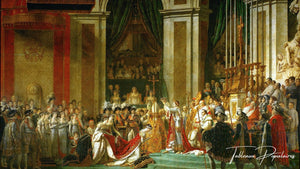
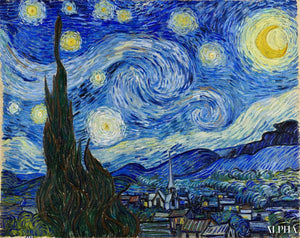
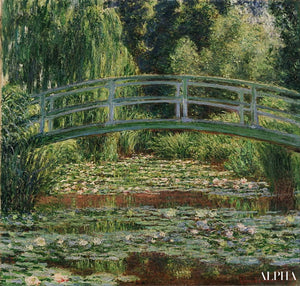
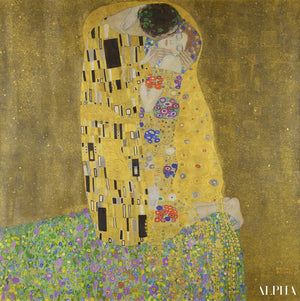
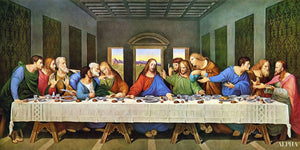
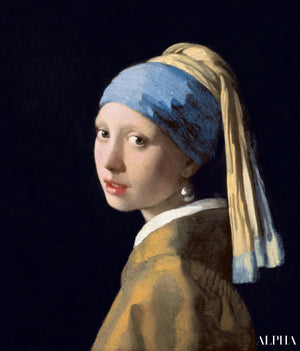
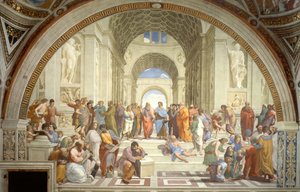
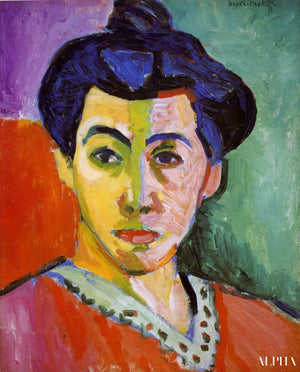
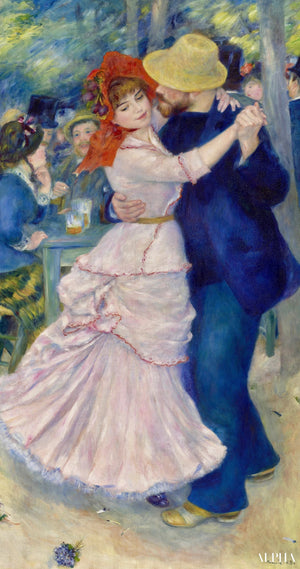
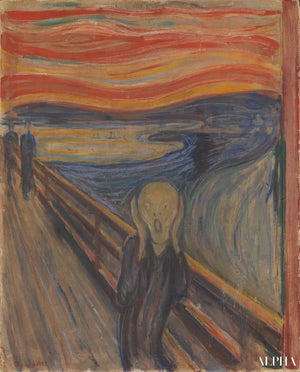
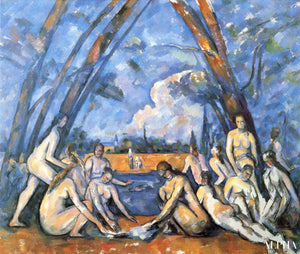
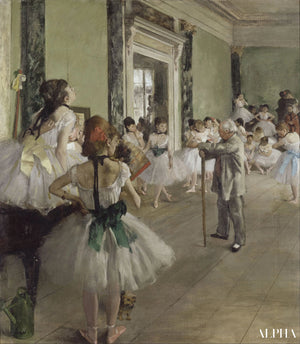
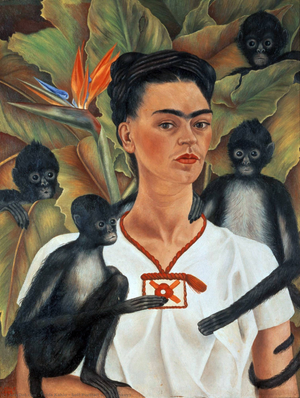
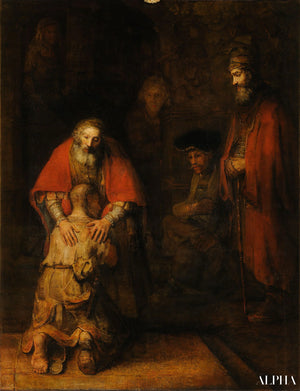
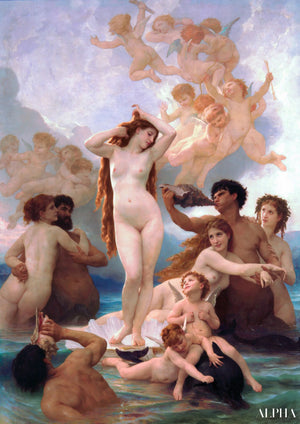












0 comments